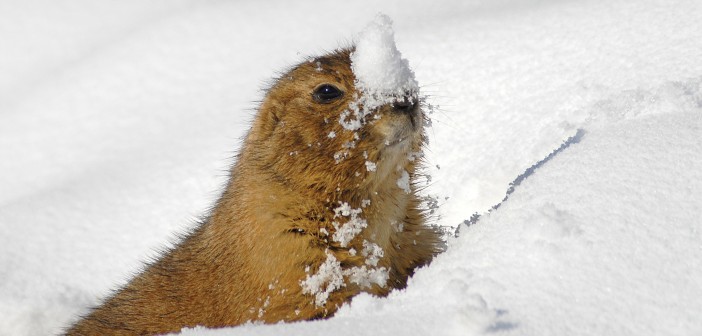Falling halfway between the winter solstice and spring equinox, February 2 – Groundhog Day – has roots in the ancient European tradition, Candlemas Day (the Christian festival of lights). The weather on that day was considered a predictor of when winter would end. An old English song goes, “If Candlemas be fair and bright/Come, winter, have another flight.”
Groundhogs hibernate from late fall until March, and according to legend, if the groundhog emerges from his burrow on February 2 and sees his shadow, it bodes six more weeks of bad weather. If he doesn’t see a shadow, we luck out with an early spring.
The Germans started their own February 2 weather-prediction tradition with a hedgehog – another burrowing animal – and once the German immigrants came to America in the 1840s, those settling in Pennsylvania continued the tradition. They switched to using a groundhog for their ceremony, as that animal was more prevalent.
The American celebration of Groundhog Day at Gobbler’s Knob in Punxsutawney, PA – which has drawn as many as 30,000 people – started on February 2, 1887. That year, Clymer Freas, editor of the Punxsutawney Spirit newspaper who also belonged to the Punxsutawney Groundhog Club, declared that Phil, the Punxsutawney groundhog, was the only groundhog able to predict the weather.
In Michigan, our official “groundhog” is Woody the woodchuck. Her handlers claim that if she emerges from her “house” and stays out for 30 seconds or longer, this indicates an early spring. If she doesn’t come out or runs back into her house before 30 seconds pass, she is predicting six more weeks of winter.
The National Climatic Data Center reportedly stated that Punxsutawney Phil’s prognostication has been correct 39 percent of the time.
Sources: History.com, groundhog.org








